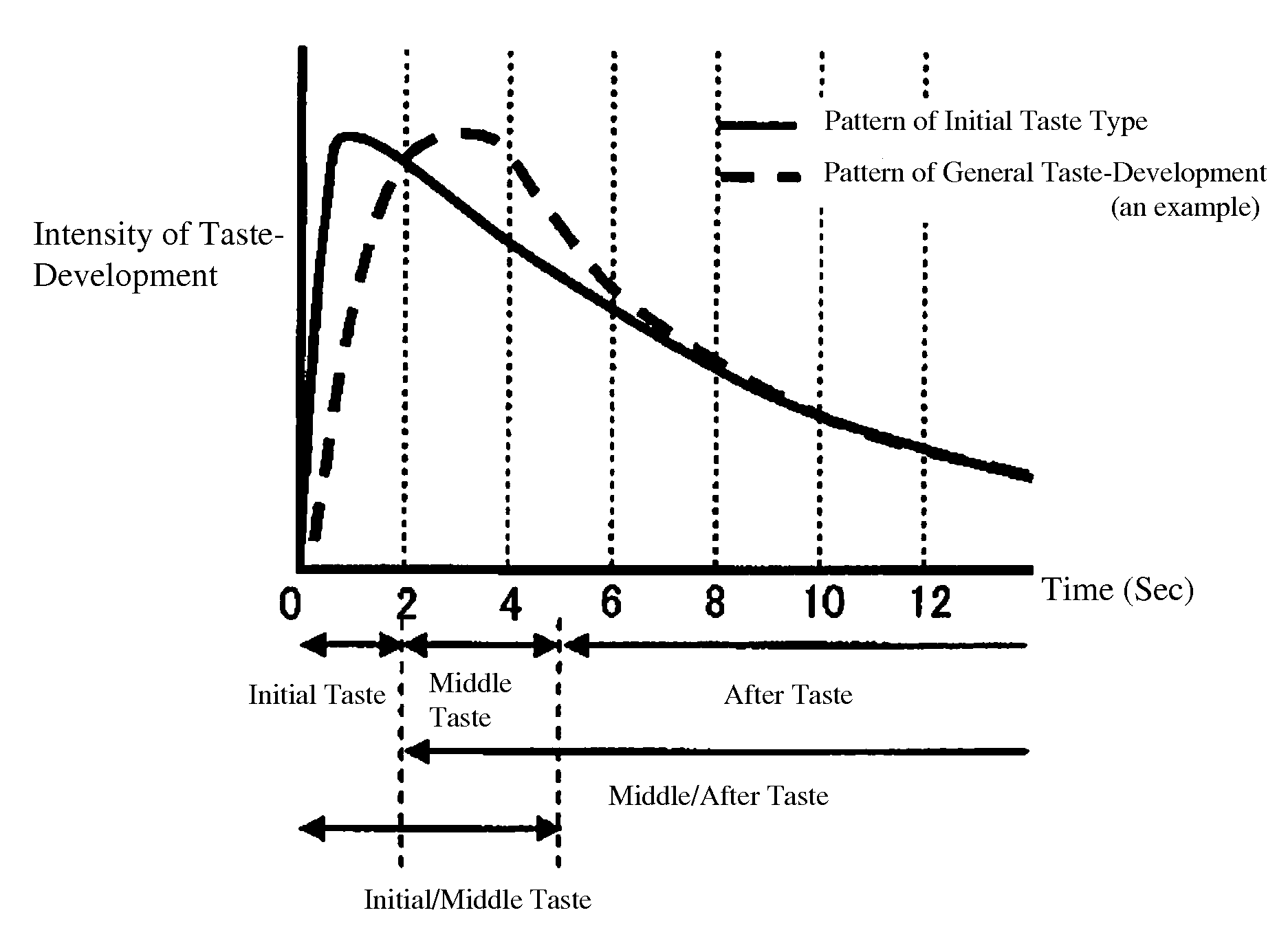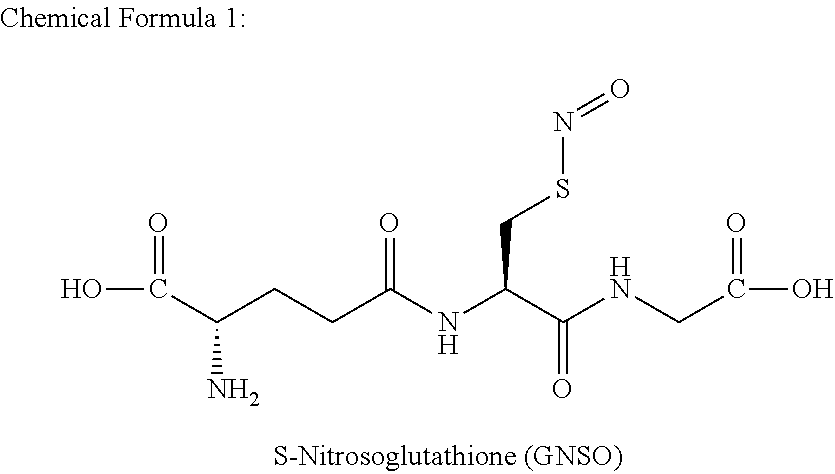Kokumi-imparting agent
a technology of kokumi and imparting agent, which is applied in the direction of peptide/protein ingredients, food shaping, peptides, etc., can solve the problems of not being used in food, or even in nature, and achieves excellent and unique kokumi-imparting effect, easy preparation, and excellent kokumi-imparting
- Summary
- Abstract
- Description
- Claims
- Application Information
AI Technical Summary
Benefits of technology
Problems solved by technology
Method used
Image
Examples
synthetic example 1
Synthesis of γ-Glu-Nva (γ-L-glutamyl-L-norvaline)
[0124]Boc-Nva.DCHA (t-butoxycarbonyl-L-norvaline dicyclohexyl-ammonium salt, 3.39 g, 8.49 mM) and benzyl alcohol (1.01 g, 9.34 mM) were dissolved in methylene chloride (CH2Cl2, 60 mL). Then, DMAP (4-dimethylaminopyridine, 0.21 g, 0.2 eq., 1.70 mM) and WSC.HCl (1-ethyl-3-(3-dimethylaminopropyl)-carbodiimide hydrochloride, 1.81 g, 1.1 eq., 9.34 mM) were added to the resulting solution, maintained at 0° C. The temperature of the reaction solution was gradually increased and stirred at room temperature overnight (16 hours). Then the reaction solution was concentrated under reduced pressure, ethyl acetate (500 mL) was added to the resulting residue, and temperature of the organic phase was increased to 50° C. It was then washed with water (100 mL), twice with a 5% aqueous solution of citric acid (100 mL), once with a saturated common salt solution (100 mL), twice with a 5% aqueous solution of sodium hydrogen carbonate (100 mL), and once wi...
synthetic example 2
Synthesis of γ-Glu-Nle (γ-L-glutamyl-L-norleucine) (Comparative Example)
[0130]Boc-Nle.0.2AcOEt (t-butoxycarbonyl-L-norleucine.0.2M ethyl acetate, 0.51 g, 2.00 mM) and benzyl alcohol (0.24 g, 2.22 mmol) were dissolved in methylene chloride (CH2Cl2, 30 mL). Then, DMAP (4-dimethylaminopyridine, 0.05 g, 0.2 eq., 0.40 mM) and WSC.HCl (1-ethyl-3-(3-dimethylaminopropyl)-carbodiimide hydrochloride, 0.43 g, 1.1 eq., 2.20 mM) were added to the resulting solution maintained at 0° C. The temperature of the reaction solution was gradually raised and stirred at room temperature overnight (16 hours). Then, the reaction solution was concentrated under reduced pressure, ethyl acetate (100 mL) was added to the resulting residue, the organic liquid was then washed once with water (30 mL), twice with a 5% aqueous solution of citric acid (30 mL), once with a saturated common salt solution (30 mL), twice with a 5% aqueous solution of sodium hydrogen carbonate (30 mL), and then once with a saturated commo...
example 1
Evaluation of Kokumi-Imparting Activity
[0150]In this example, γ-Glu-Nva was inspected for the intensity of its kokumi-imparting activity according to a quantitative sensory evaluation test.
[0151]This quantitative sensory evaluation test was carried out according to the following procedures: The intensity of the kokumi-imparting activity observed for each test compound was determined as a value observed when blending 0.00001 to 0.5 g / dL of the corresponding test compound with the distilled water containing sodium glutamate (0.05 g / dL), inosinic acid monophosphate (0.05 g / dL), and sodium chloride (0.5 g / dL). In this connection, when a sample showed an acidic nature upon the dissolution of the test compound as compared with the test compound-free control, the pH value of the sample was adjusted, using NaOH, to a level of the pH value (observed for the control)±0.2 prior to the practical use of the sample in the evaluation. The evaluation criteria are assumed to be as follows: control: ...
PUM
| Property | Measurement | Unit |
|---|---|---|
| temperature | aaaaa | aaaaa |
| temperature | aaaaa | aaaaa |
| temperature | aaaaa | aaaaa |
Abstract
Description
Claims
Application Information
 Login to View More
Login to View More - Generate Ideas
- Intellectual Property
- Life Sciences
- Materials
- Tech Scout
- Unparalleled Data Quality
- Higher Quality Content
- 60% Fewer Hallucinations
Browse by: Latest US Patents, China's latest patents, Technical Efficacy Thesaurus, Application Domain, Technology Topic, Popular Technical Reports.
© 2025 PatSnap. All rights reserved.Legal|Privacy policy|Modern Slavery Act Transparency Statement|Sitemap|About US| Contact US: help@patsnap.com


